

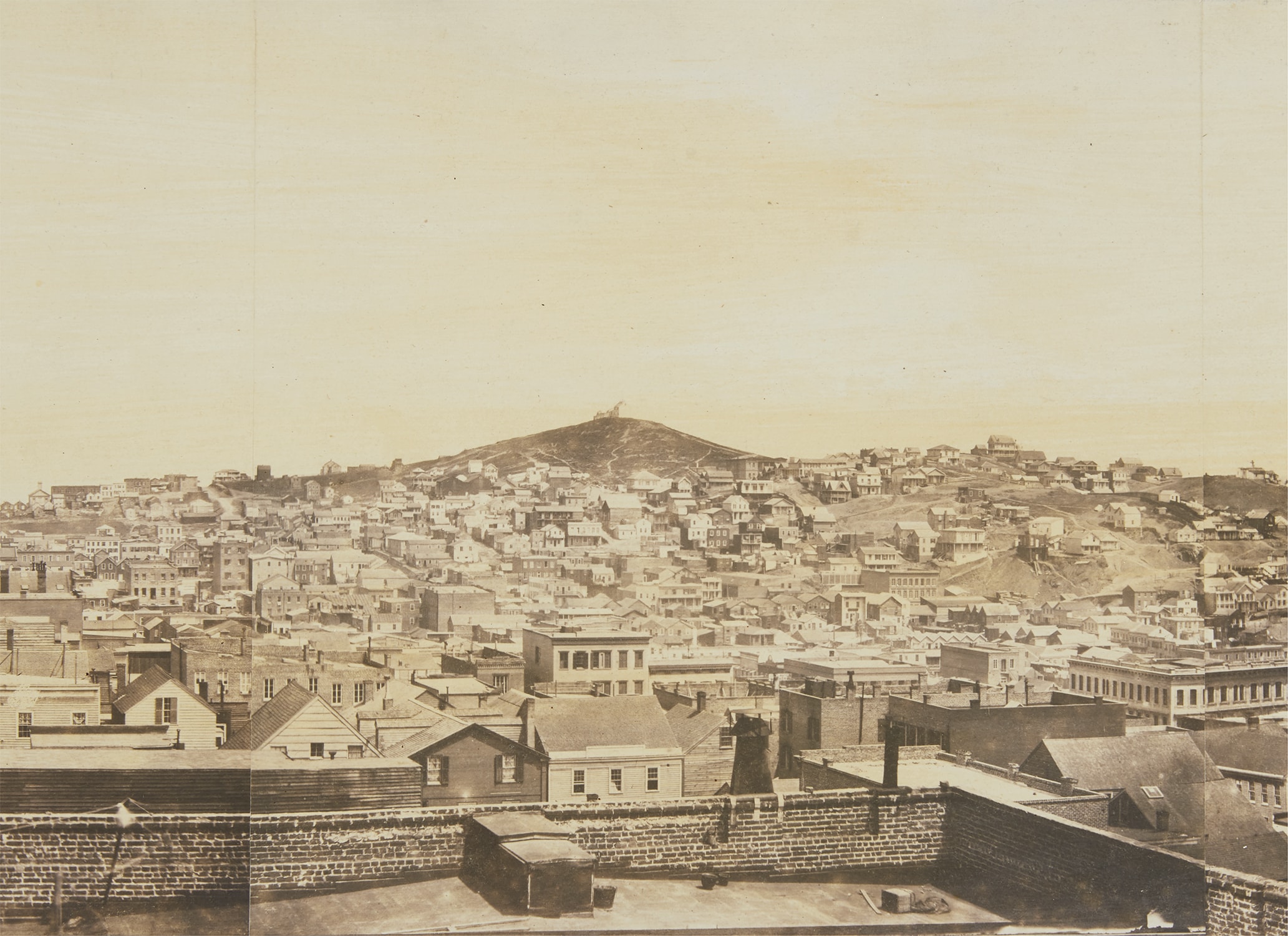

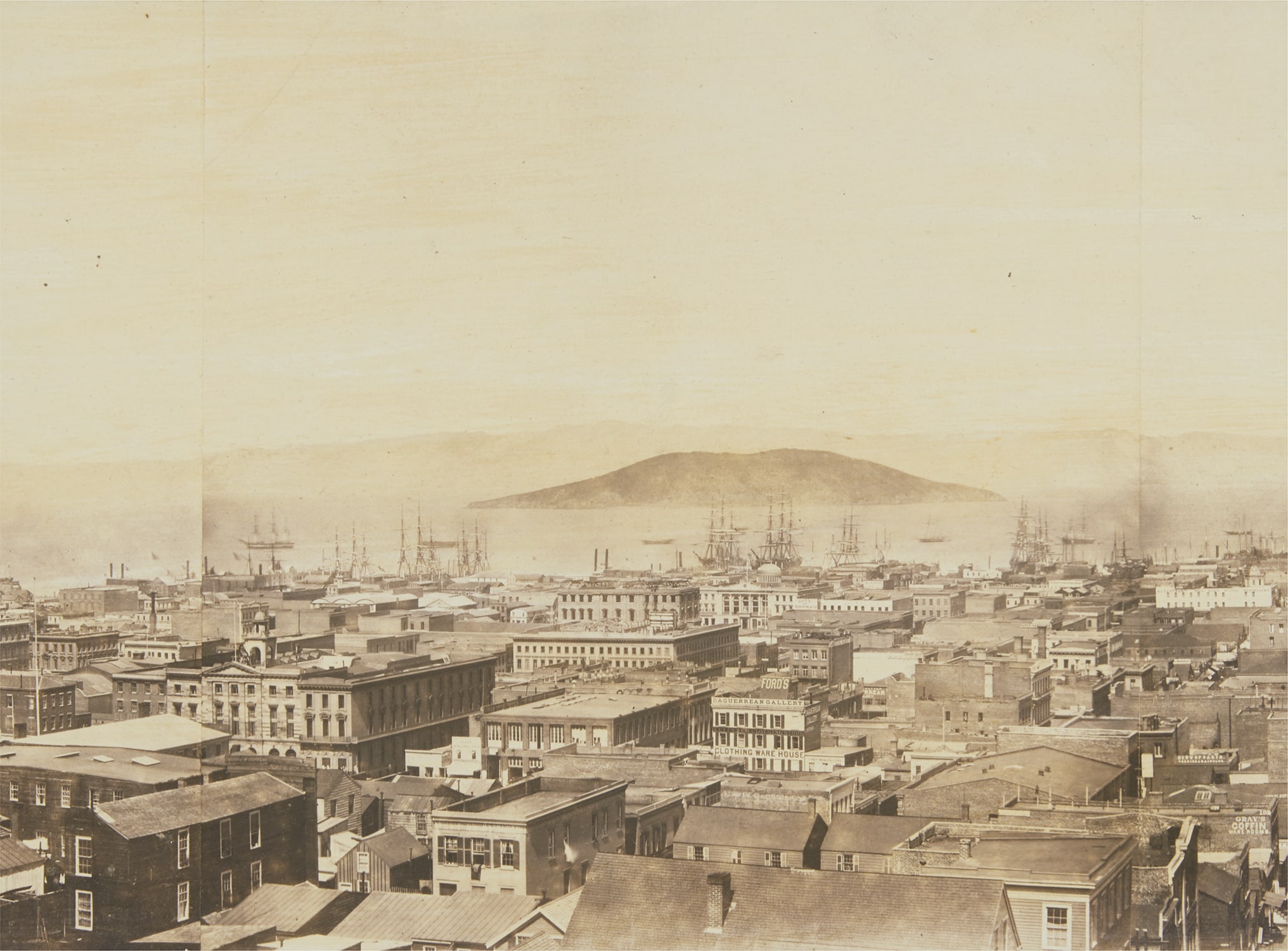
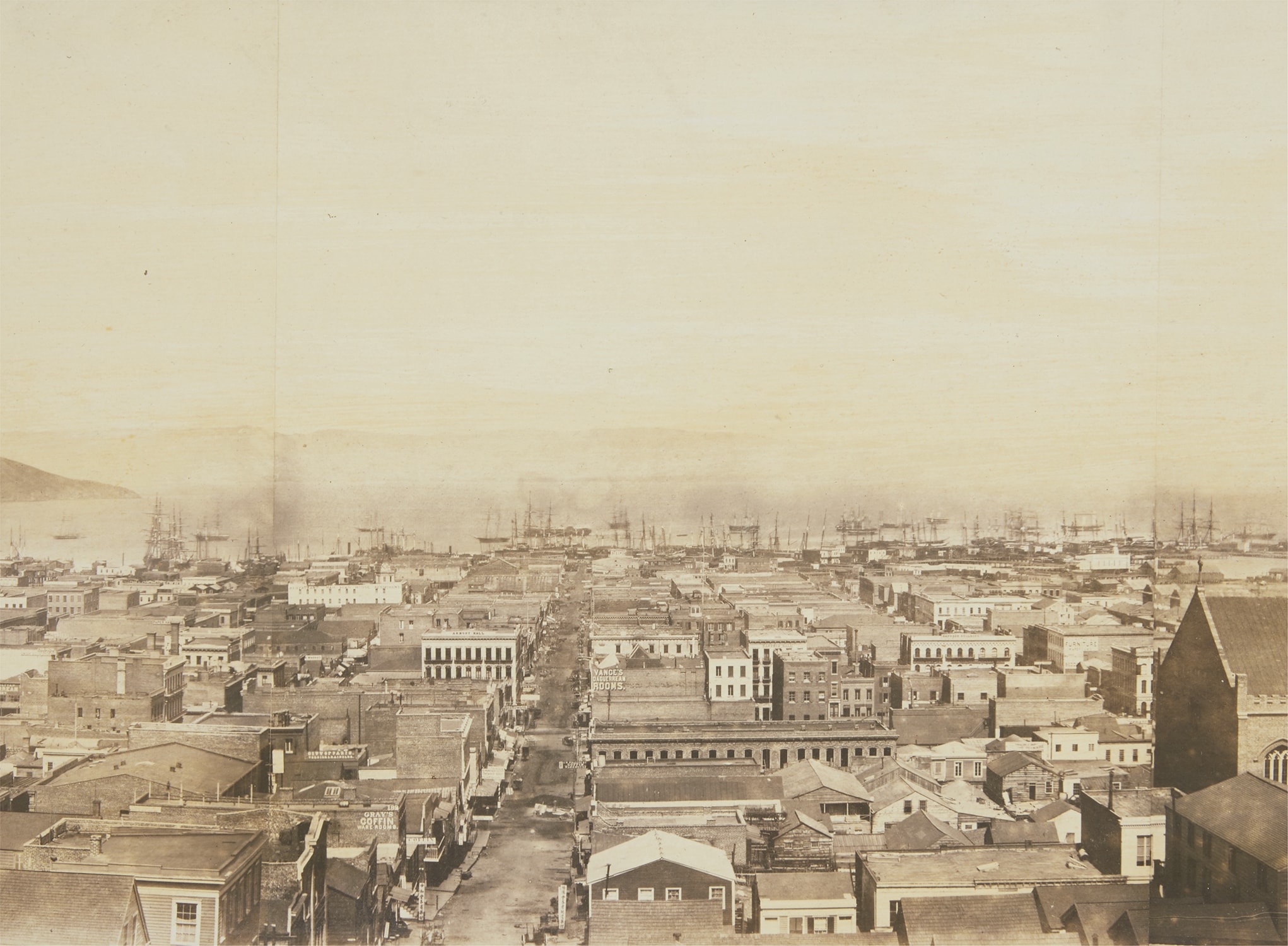
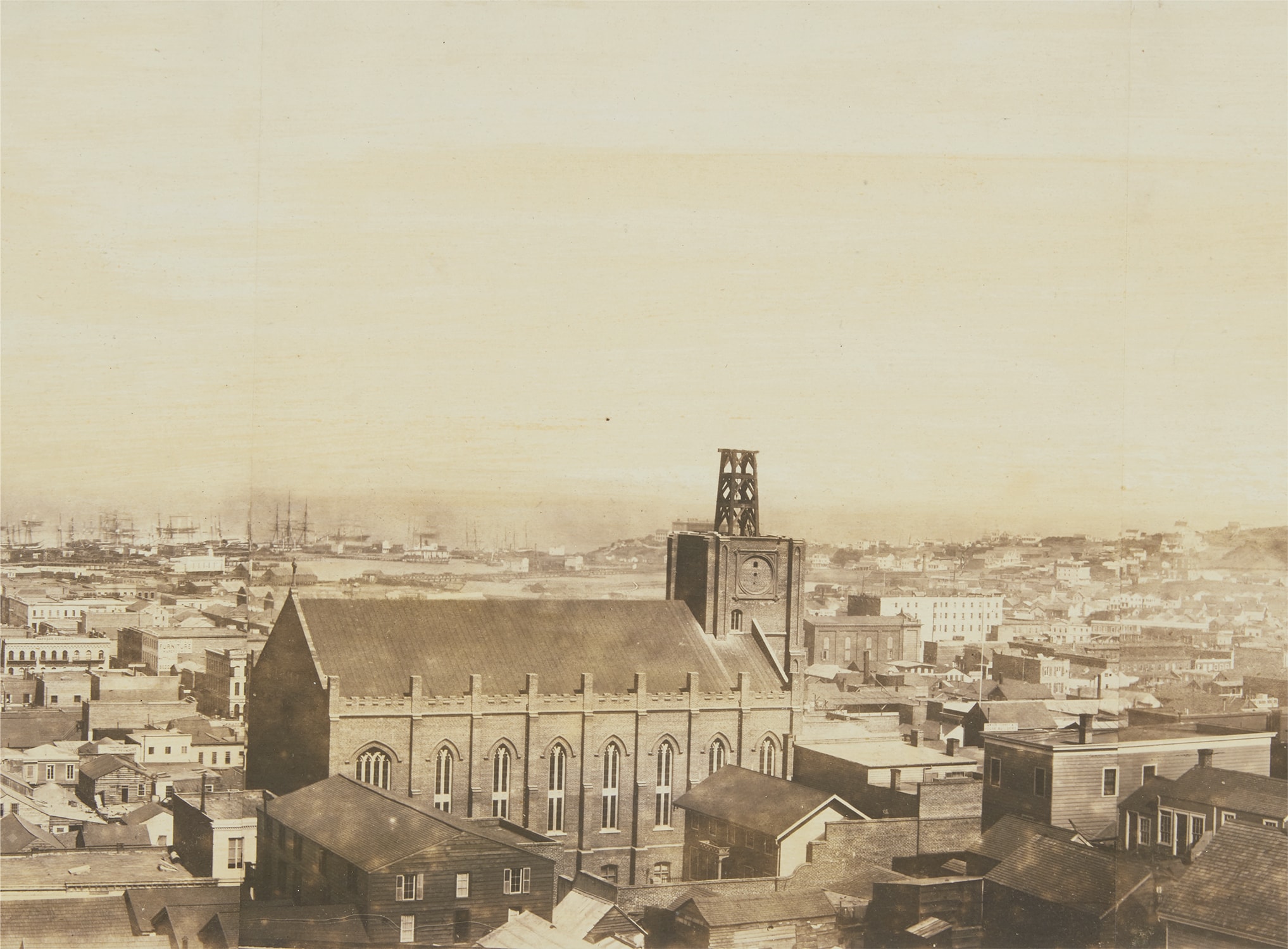
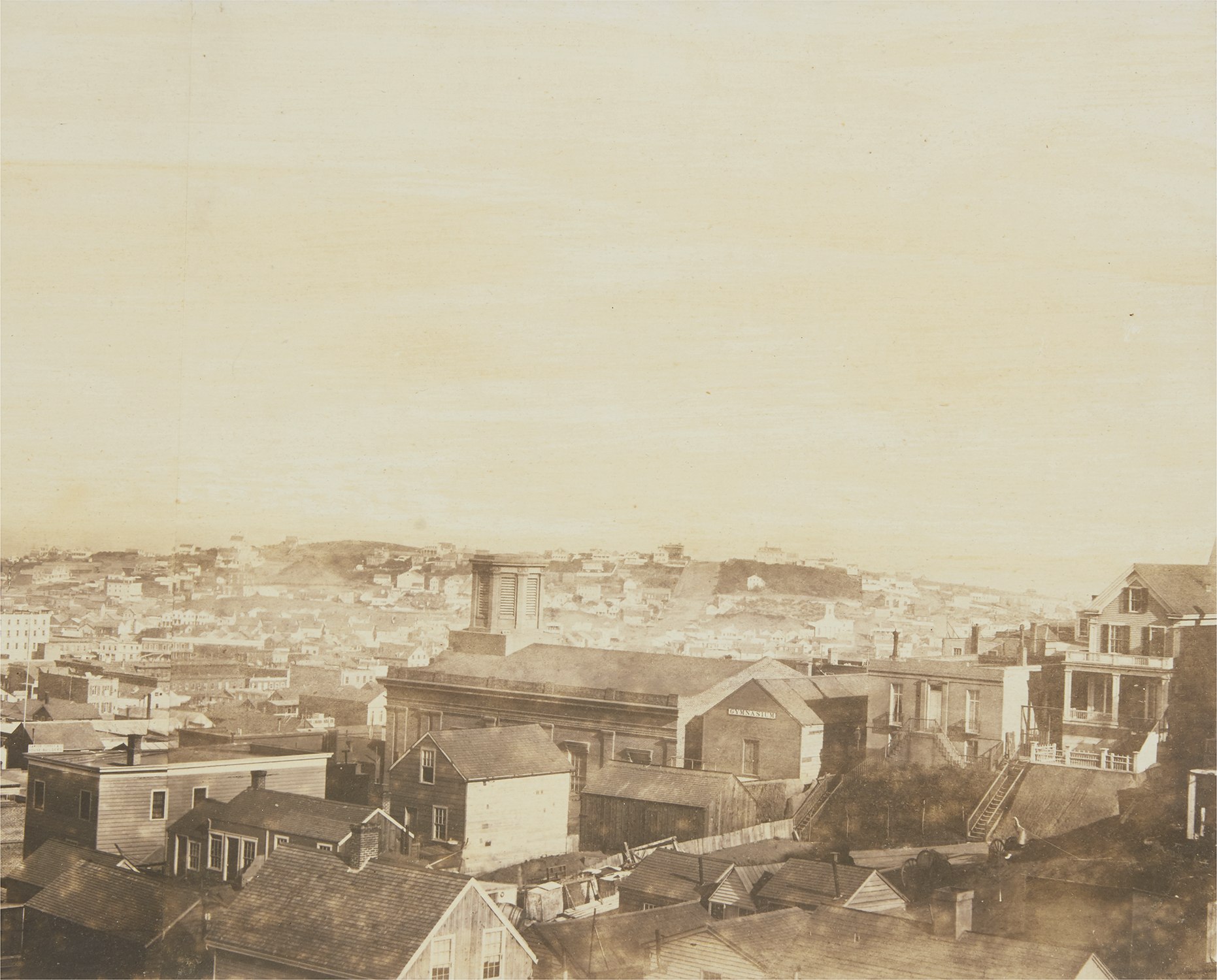










123
George Robinson Fardon
San Francisco, Cal.
1855
A panorama of seven salt prints from glass negatives, mounted contiguously.
7 5/8 x 53 3/8 in. (19.5 x 135.6 cm)
Photographically printed labels, 'San Francisco, Cal., 1855' and 'G. R. Fardon, Photographer, San Francisco, Daguerreotypes [on] Paper' affixed to the mount, with penciled inscriptions in an unidentified hand on the mount edges. Accompanied by the original wood frame and glass.